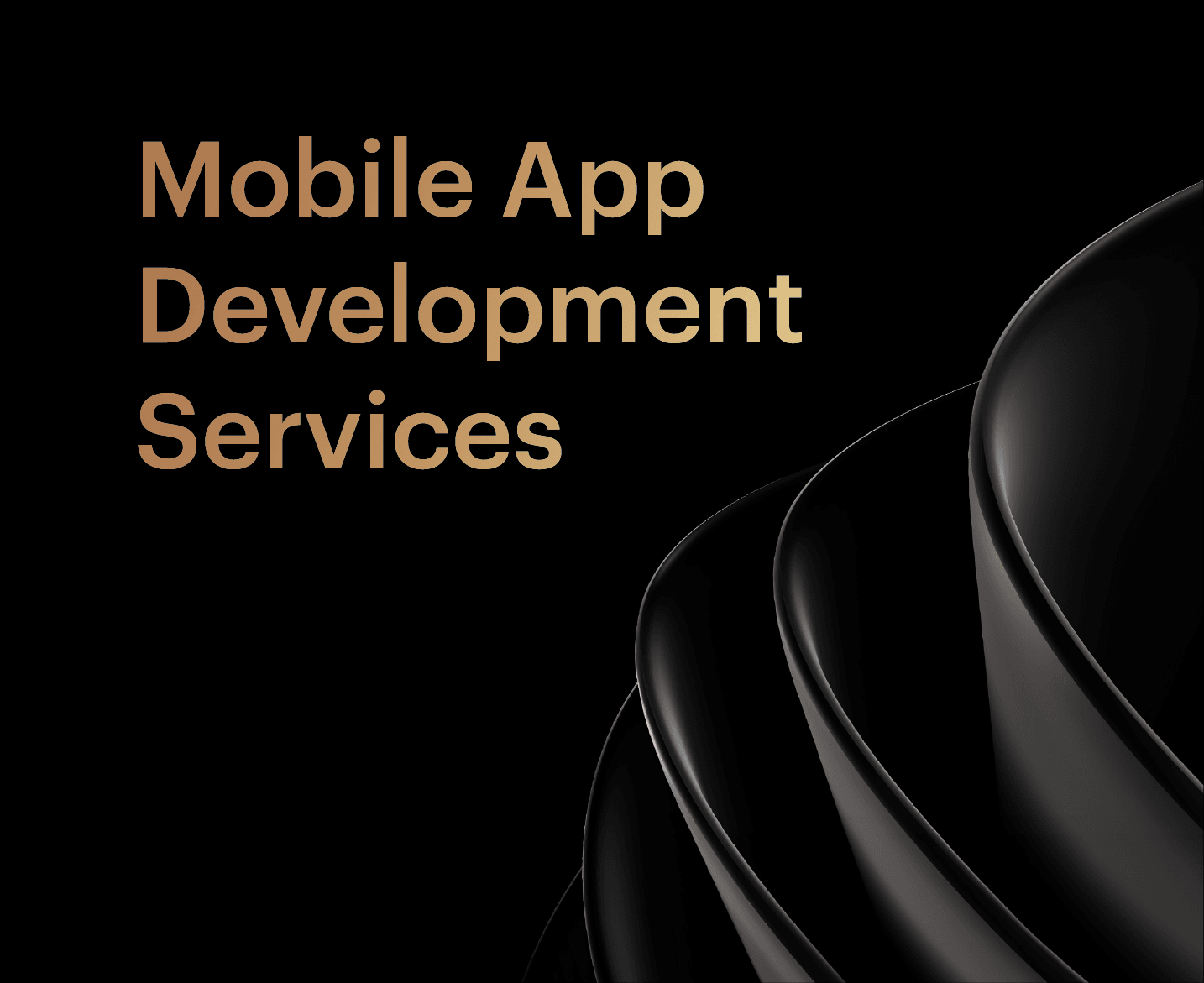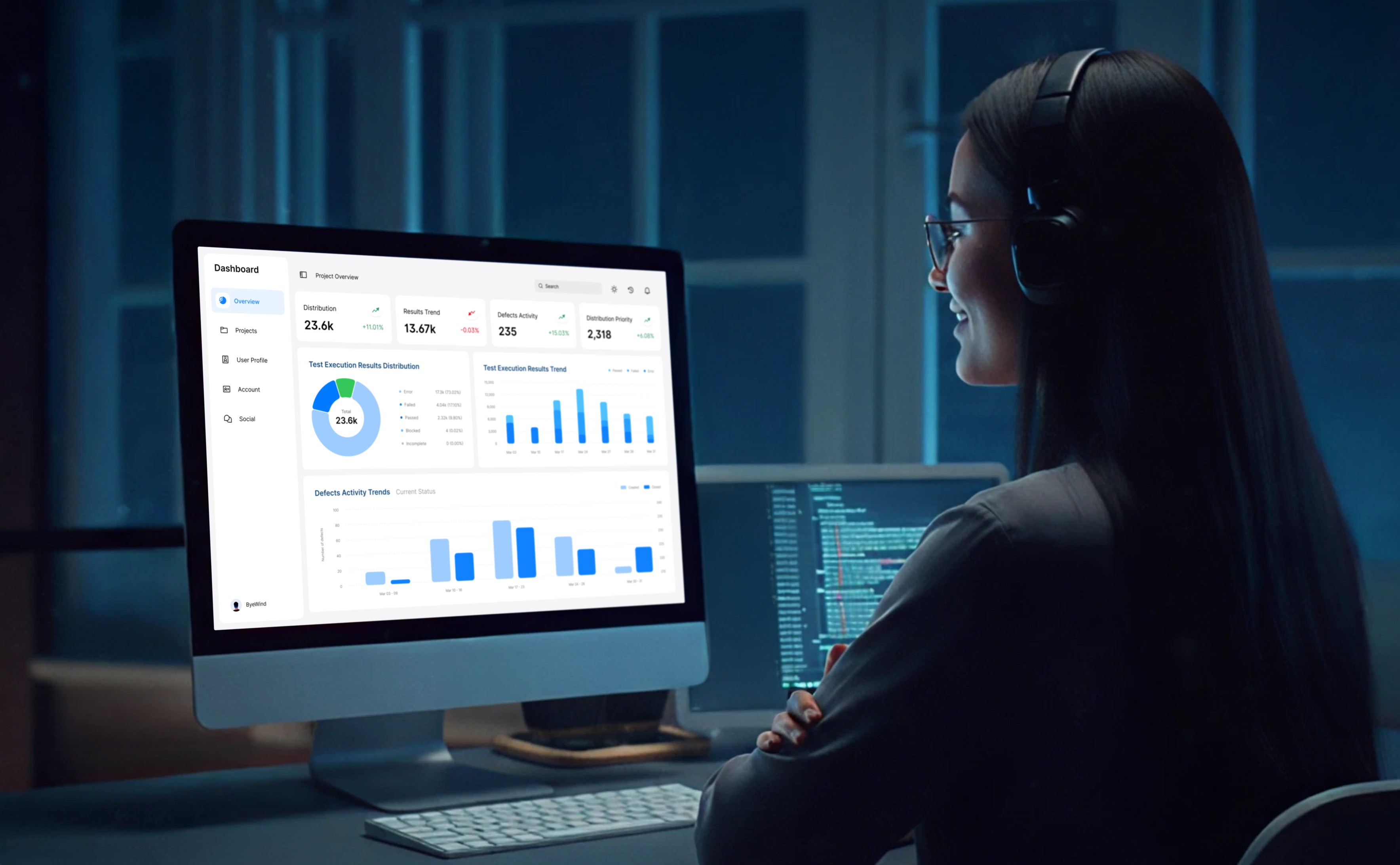History of Mobile Apps - The Past, Present and Future

Anyone who owns a smartphone – and that number is pretty huge today – has used a mobile app at some point or other. Most of us use them every single day, and several times a day. The use of mobile apps is as much a part of our lives today as say having food or going to work!
But what is a mobile app exactly? How did it all begin? What is likely to happen in the future? Let’s find out!
What is a Mobile App?
To put it simply, a mobile app is a software application designed to function on mobile phones and tablets. Apps have definitely simplified our lives, to the extent that most of us would be lost without them today.
A Brief History of the Evolution of Mobile Apps
Before we delve into the history of apps, let us take a quick look at the history of mobile phones.
- 1979 – Japan launched the first automated cellular network for cars.
- 1983 – Motorola launched the first commercially available mobile phone – DynaTAC 8000X. The evolution of mobile phones began with this model.
- 1989 – Psion released a mobile OS called EPOC
- 1991 – GSM launches 2-G cellular networks
- 1992 – Nokia launches the 1011m the first GSM phone
- 1993 – Apple launches Message pad, the first tablet.
- 1994 – The very first smartphone, Simon, was launched by IBM. It contained a few simple apps like calendar, address book, sketchpad calculator, world clock, notepad, touchscreen, email capability, and so on. The history of mobile applications starts from here. Nokia also launched the 2110, the smallest GSM phone then.
- 1997 – Nokia includes a game app, ‘The Snake’ in its phone
- 1999 – WAP was introduced; Blackberry OS was released and used for pagers. The first ‘app store’ Handango was launched. Web App concept introduced by Java.
At the turn of the millennium, once the Y2K scare was finally extinguished, the smartphone revolution really took off. The pace of mobile app development picked up, and became increasingly sophisticated in nature.
In 2002, RIM launched the Blackberry 5810 with pre-loaded apps like ringtone editor, to-do list, sketch pad, arcade games, and also introduced wireless email.
However, the real game changer was when Steve Jobs’ Apple launched the iPhone in 2007, which had several apps like photos, maps, weather, and more. A year later, HTC released the first Android smartphone, the HTC Dream. In 2008 itself, Apple launched its App Store with over 500 apps, and version 2.0 of their OS. A whopping 10 million downloads took place within three days of the launch! Not to be outdone, Google launched the Android market. Apple crossed a billion downloads by year-end.
In April 2010, Apple released the iPad, with 11,000 apps specifically optimised for the device in the app store. By August of that year, Android app downloads had exceeded one billion. The word ‘app’ was chosen as the word of the year by the American Dialect Society.
After that, it’s been a whirlwind, with hundreds of apps being added to the Apple and Android app stores. Customers became more demanding and wanted more features, and more apps to do new things. Gradually, Blackberry and Nokia phones dropped out of the race, as they didn’t keep up with the advancements and the progress made by Samsung, Apple, HTC, and the new-gen manufacturers like OnePlus. In 2011, both Android and iOS app downloads crossed 10 billion. It was also the year that Google Play Music was launched.
In 2013, over 50 billion downloads took place in both markets; by 2017, over 2.2 million apps were available in the Apple store, and 2.8 million in the Android store.
ALSO READ: The History of Digital Marketing
Uses of Mobile Apps
Mobile applications have a wide range of uses. Let’s look at some of the most popular ones:
Shopping
One of the most common types of mobile apps are for shopping. There are several sub-divisions here. For example, Amazon, Flipkart, eBay, etc are marketplaces where shoppers can find different brands and products all in one place.
Then there are individual ecommerce apps of businesses – like the Nike store, Ajio, Tata Cliq, and any small local business. These apps make it convenient for shoppers to buy whenever they want without leaving home.
ALSO READ: Scope of eCommerce: The Future of Online Shopping
Games
If you have teenagers at home, you know what I’m talking about! But it’s not just young kids, even adults play games – there are many word games, puzzles, and brain-stimulating games apart from arcade games.
One of the earliest popular games was Tetris. Multi-player games like PUBG had taken the world by storm at one point. Some of the other hugely popular gaming apps include Temple Run, Angry Birds, Candy Crush, etc.
Rideshare
Uber revolutionised the way people commuted! By simply entering their pickup and drop location, people could reserve a cab ride. Ola and Lyft are other examples.
Food
Food aggregators made it super simple to order food from home. Users can browse through dozens of food providers, place orders, and get delivery at their doorstep within 30 to 45 minutes. Uber Eats, Swiggy, and Zomato are the most popular food aggregator apps. Chains like Domino’s, Pizza Hut, KFC, etc. have their own apps as well.
Banking
Paying card bills, opening or breaking fixed deposits, transferring money – all of this can be done with a few taps on your smartphone now. Every bank has its own app.
Ticket Booking
Airlines, railways, and bus companies all have their own individual apps that let you book tickets on the go. You can compare prices, check availability, choose the class and more in minutes. Travel aggregators like Expedia, Kaya, GoIbibo also facilitate flight and train bookings.
Image Editing
Now anyone can edit photos and enhance them, thanks to apps like Canva, InShot, and Photoshop.
Hotel Booking
Vacationers can make all their accommodation bookings in advance by browsing the options and making comparisons on different sites like Booking.com, Agoda, MMT, and more. The bigger hotels may have their own apps too.
Social Media
Who can live without social media in today’s world? These apps help people stay in touch with friends and family, share news, photos, debate, and a whole lot more. Instagram is the most downloaded app of all.
Other wildly popular apps are X (Twitter), Facebook, LinkedIn, WhatsApp, Pinterest, Snapchat, Telegram, etc. There are also specific apps for dating, like Tinder and Bumble.
Meetings
While Skype was already functional, the pandemic necessitated having apps that allowed people to conduct official meetings online. Zoom became the most popular app, followed by Google Meet and MS Teams. Zoom became the most popular app, followed by Google Meet and MS Teams. Added integrations with tools like staff meeting agendas, calendars, and AI note-takers, made them even more valuable.
Entertainment
Lastly, apps to stream music, like Spotify, and streaming movies and TV shows like Hulu and Netflix are also widely used by people all over the world.
Health and Fitness
There are apps that help you stay fit by reminding you to count your calories, exercise, count how many steps you walked, and so on. This can motivate the users to lead a healthier lifestyle.
Of course, this is not a comprehensive list, there are many more – but these are some of the most widely used types of apps.
ALSO READ: Advantages and Disadvantages of Ecommerce
Platform and Technologies
Let us now look at mobile app history from the point of view of the various technologies that were used to develop apps.
We saw how in 1989-90, Psion released EPOC, and this OS was used for PDAs – you could say it was the first ‘app’. It was capable of running databases, word processors, diaries, databases, and spreadsheets. Later models with 2 MB RAM enabled users to add more apps via software packs as they could accommodate 32-bit OS.
Palm OSes were designed for Garnet OS – PDAs. The UI was touchscreen, and there were many basic apps (and some 3rd party apps) built in C and C++. The WAP browsers were released as an extension for these.
Wireless markup language was designed for XML-dependent devices and was capable of running on WAP. They were lightweight and ideal for low bandwidth, and revolutionised existing HTML strategies.
Then came Java ME or J2ME, later replaced by personalised Java, which is still around today. It’s used in different ways in phones, PDAs, and embedded devices.
BREW or Binary Runtime Environment for Wireless was launched by Qualcomm.
The next big thing was Symbian – a joint venture by PSION, Nokia, Motorola, and Ericsson. Their OS was used in millions of devices. Nokia further enhanced the Symbian OS, and installed it on many of their devices; LG and Samsung also had this OS.
After this was the era of iOS and Android – and the smartphone applications got so sophisticated that it became difficult for everyone to have skin in the game. iOS was released in 2007 and Android followed suit a year later.
If we were to talk about platforms, most of them have related developer programs that create small, vetted communities with developers bound by contracts as to what they can do. There is no one platform that can be said to be the perfect or ideal one, each has its own pros and cons.
Some are ideal for gaming, and with brand backing, they can mint money. Others are more open and apt for hobbyists, and so on.
Today, the mobile phone market is increasingly fragmented and all platforms have a portion of it. Product lines have become complex quite rapidly for manufacturers and mobile operators too. Platform penetration differs by user demographic and region, and the developer community is almost equally fragmented.
Mobile developers work with various tools, languages, and programming environments. Porting between platforms is dicey and expensive. It is nearly impossible to keep track of the different handset configurations, carrier relationships, testing requirements, signing and certification programs, with each having been transformed into separate businesses.
2014 saw a paradigm shift in app usage. It was no longer about fun and games or social media alone – but entire lifestyles. Snapchat said that over 700 million photos were shared through their platform every day.
ALSO READ: The Future of Web Development
Types of Mobile Applications
There are three basic types of mobile apps based on the technology used.
Native Apps
These are created for a specific platform or operating system. There are native apps for Android and iOS devices, and other devices out there. As they are built for a specific platform, you can’t use an app built for one platform on another – like, an iOS app can’t be used on an Android phone.
Technology
Mobile app technology used to build native apps are React Native, C++, Objective-C, Java, Python, Kotlin, and Swift are used to code native apps.
Pros:
- Faster and better performance
- More efficient utilisation of device resources
- Delivers optimised experience to users by using the native device interface
- Ability to access contacts, Bluetooth, NFC, Photos, and other device features as they connect with the hardware directly
Cons:
- Duplication of effort as each platform needs its own app
- More expensive and time-consuming
- Users have to download new files to reinstall whenever the app is updated
- Consumes more storage space
Web Apps
These are the responsive website versions capable of working on all mobile devices or operating systems as they are delivered via mobile browsers. They behave like native apps but are accessed through web browsers. They are responsive websites that adapt to the device UI of the user. Basically, when you install a web app, you are just bookmarking the website. Progressive Web Apps are native apps that run within browsers.
Technology
Languages like Ruby, JavaScript, HTML5, CSS, etc. are used to code web apps.
Pros:
- Eliminates the need for OS or platform customisation
- Reduces cost of development
- Doesn’t not eat up device space
- Updates are pushed over the web in real time, eliminating the need for update downloads
Cons:
- Web apps are completely browser-dependent
- User experience may vary as functionalities of browsers differ
- They work minimally offline – no data backup, screen refresh, or new data offering will take place
Hybrid Apps
A combination of the native and web apps, hybrid apps are wrapped within a native app, and can be either downloaded from the app store or have their own icons on the device. They look and feel like native apps though they are web apps in reality. They feature responsive design and are high-performing, and can also run offline.
Technology
A combination of mobile app technologies comprising native APIs and web technologies are used to build hybrid apps: Objective-C, HTML 5, Swift, Ionic, and so on.
Pros:
- Hybrid apps can be developed faster and more economically
- It can help prove viability of building native apps
- They load quickly, and are ideal where the internet is slow
- Deliver consistent UX
- Less code maintenance thanks to single code base
Cons:
- Less powerful
- Slower while running
Projected Trends
Mobile apps are definitely getting smarter with machine learning, AI, VR, and AR. Let’s look at the key design improvements in mobile apps:
- 5G wireless will boost speed and connectivity, will have lower latency, and be more reliable. Geotargeting and fencing will be more accurate with the shorter wavelength, high radio frequency. With batteries expected to last longer, developers can add enhanced features to apps without affecting performance.
- AR allows users to scan their surroundings, analyse it and display virtual content related to it. AR apps facilitate overlay of information by the camera regarding the viewfinder image and display details about it. Being able to virtually try out eyeglasses and shoes or view how specific furniture will appear in your home, are other examples. VR headsets allow users to experience immersive environments regardless of the size of the space they are in. The Analytics Insight report says that the AR/VR app market will come close to 18 million USD by 2028.
- Progressive web apps are likely to become even more popular than downloadable apps according to this report by search engine watch; a cross between a web page and mobile app, it is search-engine accessible, doesn’t have to be downloaded, loads quickly, and serves as a native mobile app interface. As they are SEO-friendly, they can drive more traffic. Alibaba’s PWA helped increase conversions by over 75%.
- Accelerated mobile pages use reduced excess code and data, loading web pages quickly. A<P will enable lightweight pages that use 10x less data and load in under a second. They will push out low-quality apps.
- Greater personalisation will happen thanks to ML and AI. A huge transformation is happening because of these technologies. Personalised and quicker search and shopping, AI chatbots, and suggestions take the shopper to the desired product/content quickly.
- Predictive analytics uses stats, ML, and data mining to smartly guess human interactions, customise items for different customers and streamline their apps. Predictive data can also help in decision making about customer preferences.
- There are several bots like Alexa and Siri, and this trend is expected to increase. More people seem to be willing to talk to a chatbot than a virtual agent according to this study by J D Power. Thanks to NLP, semantic search, sentimental analysis, voice and face recognition, bots are becoming more lifelike.
- Mobile commerce is replacing ecommerce apps and sites as people can conveniently shop through a UI on mobile devices. They get engaging experiences and can buy on impulse, especially as search is highly optimised for mobile.
- Bluetooth beacon tech allows businesses to connect to users’ mobiles when in range, enabling engagement with prospects. They can send information or collect data that can be used in targeting, via analytics tools, and website tracking that are tweaked for mobile.
- Mobile wearables are on the rise, smart watches, fitness trackers, GPS tracking bands, health monitors, smart glasses, smart rings, etc. it is expected that wearable functionality and their related apps will become increasingly sophisticated.
Conclusion
We can safely say that apps are here to stay for a long time to come. In fact, most of us today would not be able to imagine a world without apps; you name it, and you find an app for that. The future of mobile apps is definitely exciting.
If your business doesn’t leverage the potential of mobile application development, you could be missing out on golden opportunities to reach wider audiences and get more customers. Don’t allow this to pass you by!
WAC, the leading digital transformation services company in India, offers outstanding iOS development and Android development services that have already helped countless companies boost revenues significantly. Get in touch with us now to know more about our mobile app development services.

Mobile App Development Services
From enterprise to consumer apps that are specifically tailored to meet your business needs
- How to Start App Development for Startups Successfully
- Best iOS Architecture Patterns for Your App’s Success
- React Native vs Swift: Which one should you choose for iOS app development?
- SwiftUI vs UIKit: Which iOS UI Framework Should You Choose in 2026
- Swift Vs. Objective-C: Which is the Best Option for the 2026 iOS App Development?
Discover Digital Transformation
Please feel free to share your thoughts and we can discuss it over a cup of tea.










